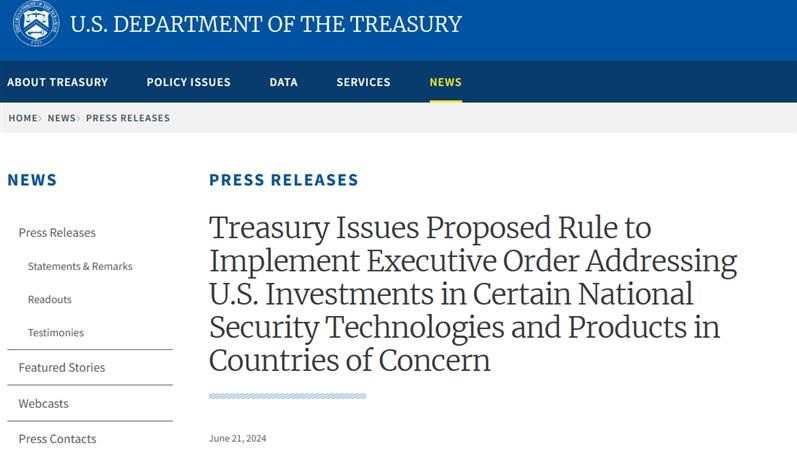In today's globalized world, economic and trade relations are an important link for interaction between countries. However, the release of the 165-page draft Notice of Proposed Rulemaking (NPRM) by the U.S. Treasury Department has created new tensions in the economic and trade ties between China and the United States. In this article, China Exportsemi net will try to analyze the content, impact and strategic considerations behind this draft.
An overview of the content of the draft
According to the draft, the areas in which the United States intends to restrict investment in China include high-tech industries such as semiconductors and microelectronics, quantum information technology, and artificial intelligence. These areas are not only at the heart of the current technological revolution, but also the key to the future development of the global economy. The draft details the obligations to cover the transaction, the type of transaction, the technical specifications, the information to be provided, the investigation criteria and the penalties for non-compliance.

Pictured: Recently, the United States drafted a draft called the Notice of Proposed Rule Making (NPRM).
China's position and reaction
A spokesperson for the Ministry of Commerce of China expressed grave concern and resolute opposition to this. The spokesperson pointed out that the US move violates the consensus reached at the meeting between the two heads of state, affects the normal cooperation between Chinese and US enterprises, undermines the international economic and trade order, and disrupts the security and stability of global industrial and supply chains. China reserves the right to take corresponding measures.
U.S. strategic intentions and considerations
The strategic intent behind the U.S. move could involve national security, protecting the competitiveness of local high-tech industries, and limiting the global influence of China's technological development. However, such unilateralism runs counter to the market principles of globalization and may lead to tension and instability in international economic and trade relations.
Impact on the global industrial chain
U.S. restrictions could have a profound impact on global industrial chains. As an important global manufacturing and innovation base, China has close economic ties with countries around the world. The technological superiority and market influence of the United States cannot be ignored. Such investment restrictions may lead to the restructuring of the global industrial chain and affect the recovery and development of the global economy.
Data case analysis
Taking the semiconductor industry as an example, according to the International Semiconductor Industry Association (SEMI), China's semiconductor market is expected to reach US$200 billion in 2023, accounting for 30% of the global market. U.S. restrictions will have a direct impact on investment flows in this market, potentially leading to a restructuring of the global semiconductor supply chain.
Generally speaking, the restrictions on US investment in China's high-tech sector are a new challenge in Sino-US economic and trade relations. In the face of this challenge, China and the United States need to resolve their differences through dialogue and consultation on the basis of mutual respect, equality and mutual benefit, and jointly maintain the stability of the multilateral trading system and the global industrial chain. At the same time, China also needs to continue to deepen reform, expand opening-up, and enhance its scientific and technological innovation capabilities and industrial competitiveness to cope with the uncertainty of the external environment.






